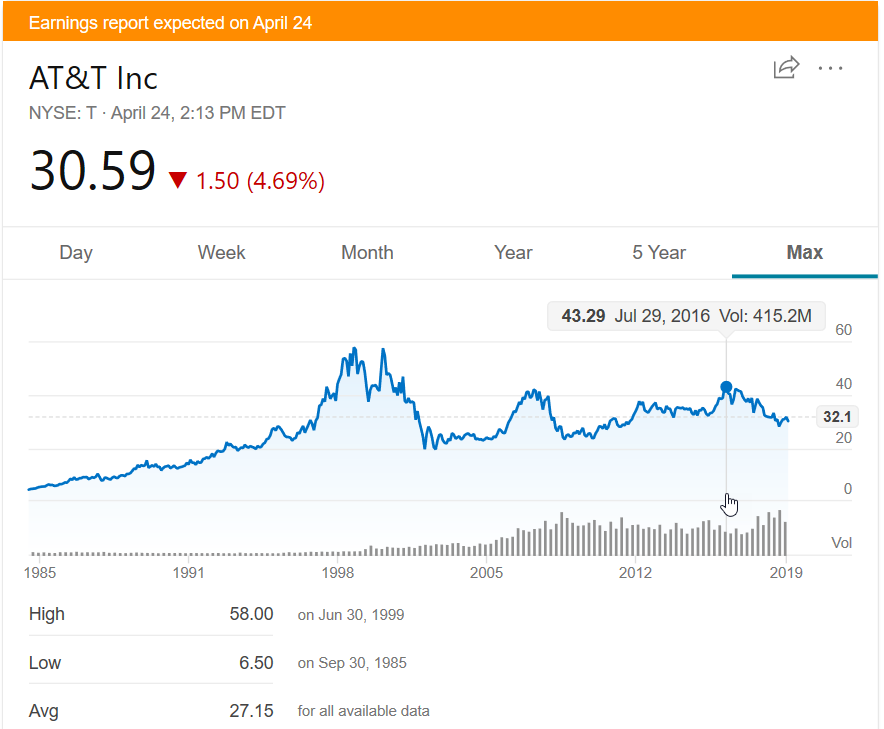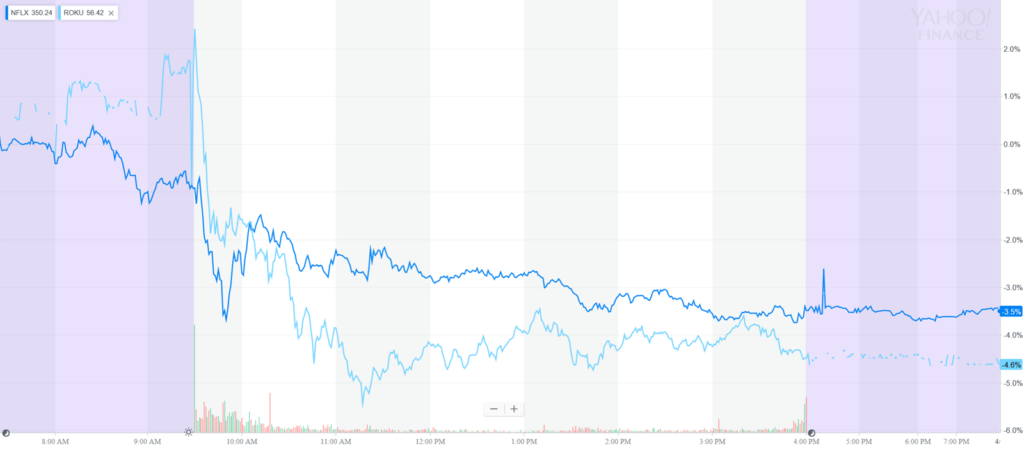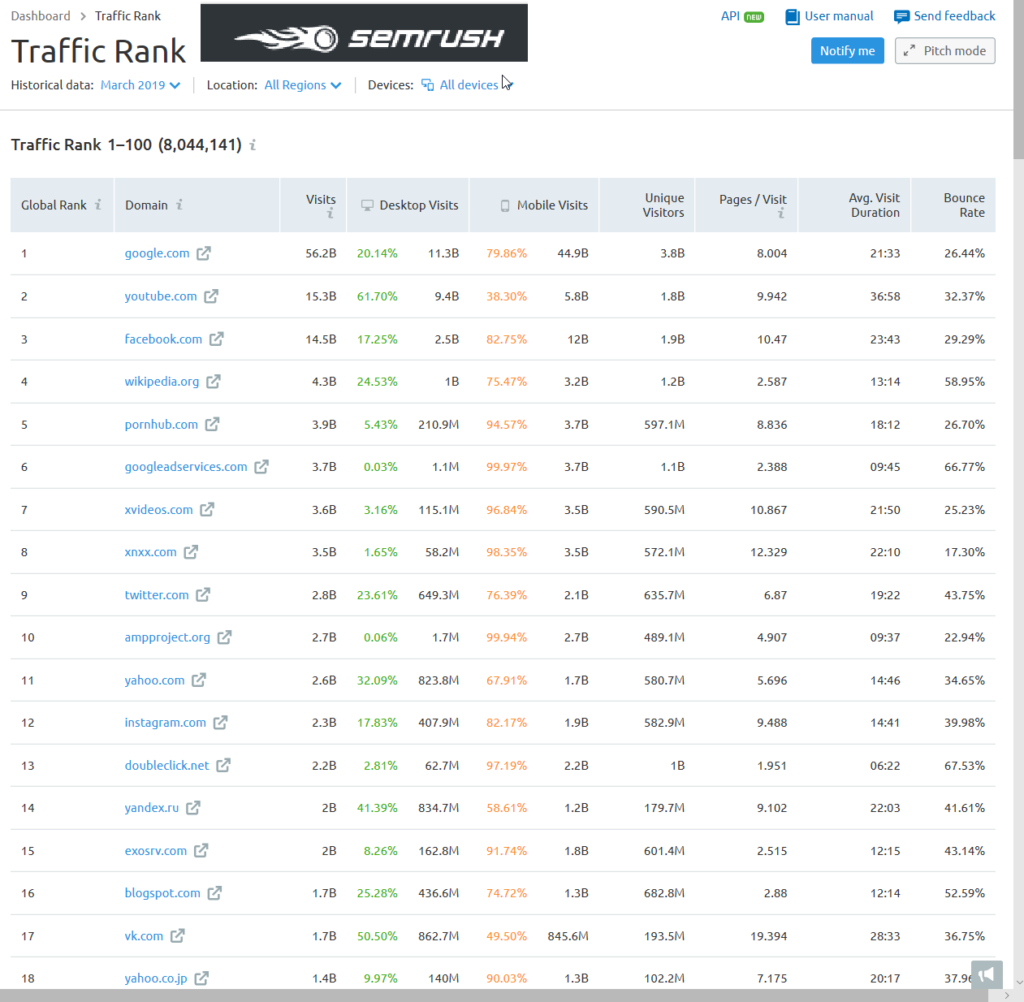Amazon has had a history of making announcements that decimate adjacent markets. They’ve acquired Whole Foods & crashed Kroger, they’ve acquired PillPack & crashed CVS + Walgreens, and they’ve had other retail announcements in the past which have clobbered other retailers.
In most cases, each of the “oh shit, Amazon …” stories has been a decent entry point for at least a short term trade.
On the most recent conference call Amazon announced they were going to cut delivery times for Prime subscribers from 2 days to 1 day.
“We’re currently working on evolving our Prime free two-day shipping program to be a free one-day shipping program,” Olsavsky said, adding that Amazon expects to spend $800 million this quarter to make the change.
Amazon offers one-day delivery on some products now, and even same-day delivery for some purchases. But Olsavsky suggested that the company now expects that the standard free two-day shipping that is the biggest selling point for the Prime subscription plan will be improved to a one-day schedule globally.
The faster shipping time increases the range of impulse purchases consumers may conduct on Amazon. Amazon still has gaps in their catalog in terms of competitive pricing & the more they move to speed up advertising the more they’ll need to either cross-subsidize from AWS or squeeze merchants on their platform with more junk fees to make up for the cost difference.
Some parts of the market are logical & some are utterly illogical. For instance, after there was news that Nancy Pelosi’s team was guaranteeing health insurers they wouldn’t eat any cramdowns anytime soon & Trump suggested it made sense to wait until after the 2020 election to reform healthcare one could presume that would be an “all clear” to dip into the health market.
Markets not only tend to be forward looking, but they also tend to be more headline & emotionally driven than most would give them credit for being. So when the Democratic presidential candidates started taking hard left planks to try to differentiate themselves from the field, the concept of socialized medicine / Bernie Sander’s Medicare-for-all absolutely clobbered health stocks.
The current Democratic leaders in Congress — Senator Chuck Schumer of New York, the minority leader, and Nancy Pelosi of California, the House speaker — have not supported it. President Trump and Republican leaders in Congress have been demanding a smaller government role in health care, not a larger one. And the giant health care companies, which have enormous wealth and influence, are, for the most part, committed to blocking the idea. …
Data from Bespoke Investment Group shows that the damage to health care stocks became much more acute on Tuesday and Wednesday. On those days, according to Bespoke, the health care sector, dominated by UnitedHealth, underperformed the S&P 500 by its widest margin since April 2009.
Joe Biden throwing his hat in the ring has the healthcare industry hopeful, but I can’t see him winning the election.
The health care industry — doctors, hospitals, insurers, pharmaceuticals — has united in the Partnership for America’s Health Care Future, a lobbying coalition, to stop Medicare-for-all. That organization aggressively denounces single-payer at every opportunity, and has condemned proposals like a public option or letting people 55 and older buy into Medicare.
The Democrats would need to take the Presidential election, the House of Representatives & the Senate in order to pass a Medicare-for-all bill. And they would need to have a strong enough majority to override moderate grifter types like Nancy Pelosi. In short, “The selloff is based on legislation that has almost no chance of passing,” said Raymond James analyst John Ransom.
If that tail risk doesn’t come true then many stocks in that sector are a steal. And if at any point during the election cycle it looks like Donald Trump is going to get re-elected or a more moderate Democrat is likely to get the nomination healthcare stocks will pop.
After the steep declines health industry stocks today are almost like buying a call option on Bernie Sanders losing the election or a put option on him winning.
The Amazon shipping announcement took about 6% off Target, 4% of Kroger & 2% of Walmart. Those are substantial moves for staid retailers.
The flip side to the announcement is this: Amazon’s move to one-day shipping shows the competition is catching up
“[I]t would be a mistake to sell large retailers on this announcement as they have anticipated this for some time and are already rolling-out corresponding services,” Zolidis said in a statement. “Further, we believe that a total offer that gives consumers the option to get product when and where they want it, either at home or in the store, is superior to a delivery-only option.”
I just bought a bit of KR & TGT. They could still fall further, but unless the entire market craters they are reasonably priced.
And any logic which concludes offline retail is going to get wiped out by Amazon becoming more efficient is also logic which might conclude that Amazon is likely to get broke up after the election. President Trump already hates Jeff Bezos (for owning the Washington Post) & some of the Democrat presidential candidates like Elisabeth Warren have spoke mad hate about Amazon.
To be clear, I don’t think Amazon gets broken up anytime in the next 5 or 6 years. But I also don’t think changing shipping from 2 days to 1 day is a huge deal changer for most people.
A smarter approach IMHO would be one where Amazon gave buyers a sliding scale for shipping rebates for either buying more merchandise at once and/or selecting slower shipping dates for credits to apply to future purchases. Amazon already does the second a bit, but I think they could have their shipping features more than pay for themselves by allowing customers to not only enjoy free shipping widely but also get paid to wait.
A couple years ago IHL Group highlighted how the “retail is dead” meme was sort of garbage & how a lot of the company closures were from debt-levered LBOs by private equity firms. That business model is a “no lose” as even when they go under they still get to loot the value of the underlying real estate & pension plans while layering on dividend recapitalization after dividend recapitalization until they create a debt mountain so large the firm implodes.
To this day IHL Group is still debunking new rounds of retail doom.
Many retail names today are still dirt cheap.
Either they are pricing in a recession or they are pricing in asset price inflation where tech companies will keep appreciating much faster than value companies.
“Growth shares have surged to the highest levels versus cheap equities since the dot-com bubble, underscoring fierce demand for companies less exposed to the gyrations of the economic cycle. Stocks posting a strong return on equity are near their most expensive since 1990, according to Sanford C. Bernstein & Co. To cap it all, tech multiples have jumped toward 2009 highs relative to the broader gauge. It all suggests an “extreme” valuation gap is setting the stock market up for a rotation away from winners in favor of the losers, according to Morgan Stanley, echoing a growing number of Wall Street strategists. … the most-loved equities look decidedly expensive in this melt-up. And all bets are off on how they will fare in any correction, with the projected earnings expansion for growth stocks this year not much stronger than peers”
In other news, Naspers exchanged their MakeMyTrip shares for new shares in Ctrip, giving the leading Chinese online travel agency a 49% stake in the leading Indian online travel agency. MMYT was up over 6% on the news. Ctrip is unlikely to increase their MMYT holdings any further given the local “national champion” policies India is following in an attempt to create home grown tech platforms the way that China has Alibaba, Baidu & Tencent. Skift explicitly stated the 49% stake was capped to limit regulator scrutiny:
Naspers offered Ctrip even more shares, which would have given it control of MakeMyTrip, noted analysts at Goldman Sachs, but Ctrip opted for a minority position to avoid regulatory scrutiny. Ctrip’s concerns centered around a foreign company taking over a brand in India. Naspers will own about 6 percent of the Chinese travel agency’s outstanding ordinary shares after the maneuver. In 2016, Shanghai-based Ctrip had invested about $180 million in MakeMyTrip, gaining it one board seat. With this deal, it will get Naspers four board seats. It now has five of the 10 board seats.



